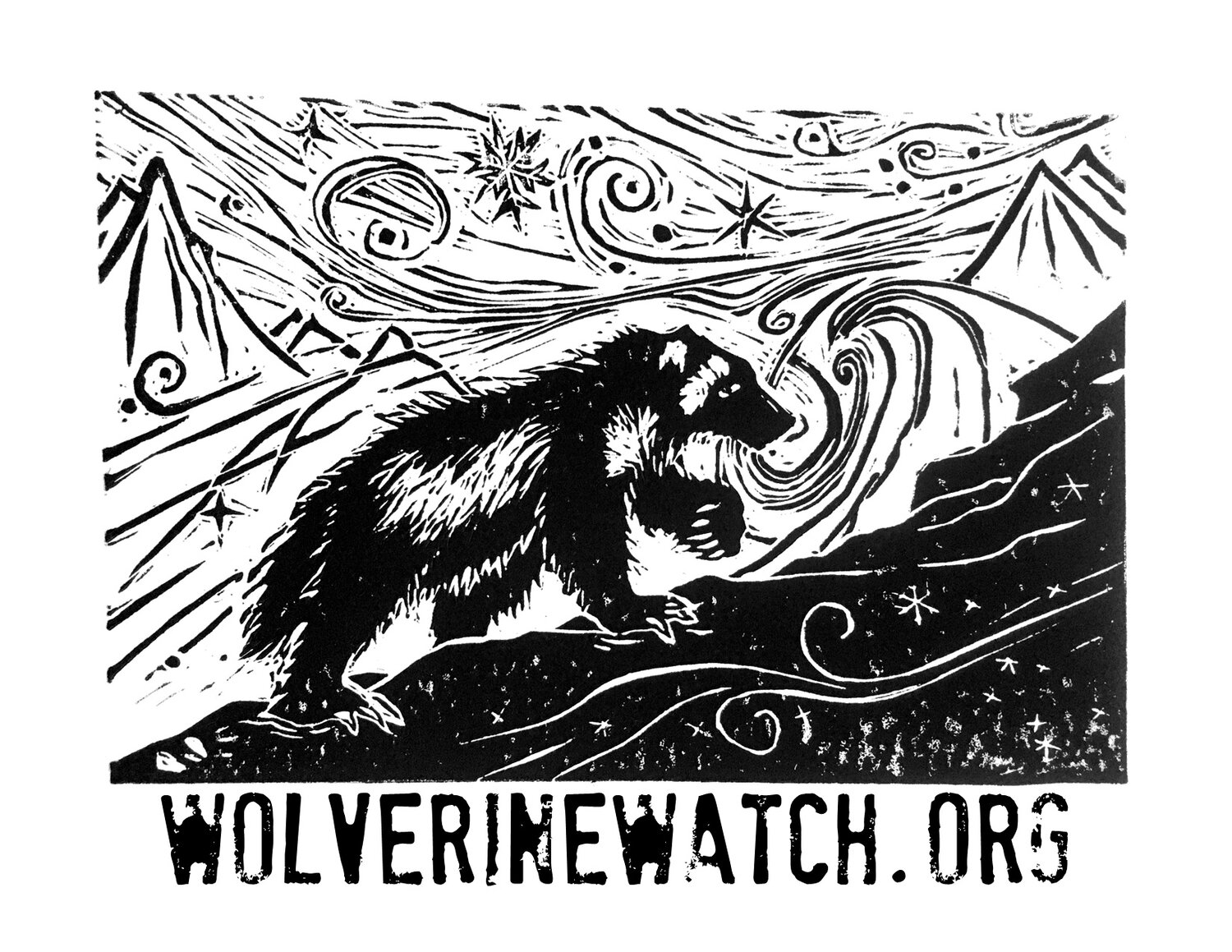About us
Two wolverines in their summer coat running on a glacier. Photo: www.jaybrescacin.com
Our goal
We aim to provide science-based information to agency decision-makers, landowners, natural resource companies, and First Nations so that the needs of wolverine are incorporated into land use plans, management plans, highway mitigation and other projects.
We strive to engage and educate communities to build support for protecting the integrity of our large landscapes, conserving wildlife movements and habitat connectivity.
Two examples: our research has contributed to the closure of an unsustainable wolverine harvest in the BC Kootenay Region, and our work on female dens is leading to protections from industrial activities for some of these sensitive locations.
Setting up one of the first “run pole” sampling stations in the Selkirk Mountains.
Our approach
Wolverines are elusive and can be difficult and expensive to study on a landscape scale. Since 2010 we have perfected our skills to collect high quality wolverine data using non-invasive methods such as remote cameras, drones, and DNA analysis of passively collected hair samples.
Non-invasive methods minimize impacts on the animals and are cost-effective and highly scalable. These attributes allow us to carry out large-scale studies of wolverine ecology in multi-use protected and non-protected landscapes to answer questions about how humans impact wolverine populations.
Big tuft of wolverine hair deposited at a sampling station.
Who we are
We are a group of wolverine researchers who collaborate on wolverine related scientific research projects, because together we can accomplish more. Wolverinewatch.org itself is not a formal organization, instead it is a fully independent, very flexible and informal research group started in 2010 with seed funding from the Alpine Club of Canada. Find more info on our Team page.
The first proof (a.k.a. “wolverine selfie”) of a wolverine using a wildlife underpass to cross the Trans-Canada Highway in Banff National Park.
A collaborative effort
To succeed, we work collaboratively with agency biologists, industry partners, non-profit conservation groups, and volunteer citizen-scientists to gather data and share the projects' findings.
Field day! A big part of our success are our collaborations - here, one of our heli ski industry partners donated the helicopter time and assigned one of their professional ski guides to help us!
Current research
Our current research projects aim to better understand the effects of human activity on wolverine distribution, reproduction, connectivity and gene flow in BC’s Upper Columbia, North Thompson and Central Rockies Region; locate female dens in the Southern Columbia Region; and assess (transboundary) connectivity and gene flow in Western North America.
The spectacular Upper Columbia Region with typical wolverine habitat, virtually impossible to access on foot!
How you can get involved
Wolverines need more than just us scientists running after them! Be our eyes and ears on the landscape by reporting all your wolverine observations. Learn more about wolverines and wolverine conservation on this website and our social media pages (Facebook, Instagram), and share it with your network. Support our research projects directly to help us achieve more.
Unexpected wolverine encounter during a backcountry ski trip in the Canadian Rocky Mountains.







